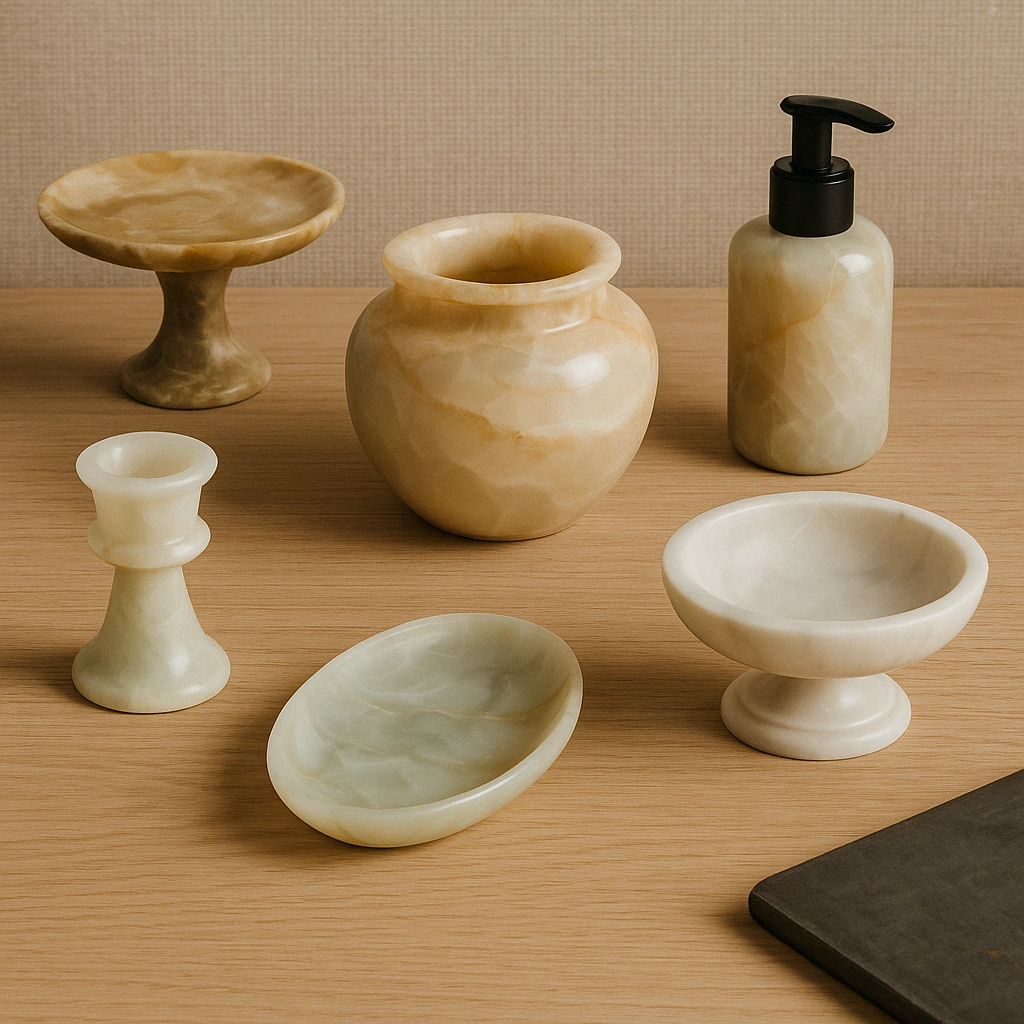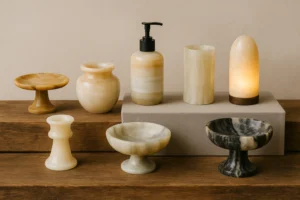Introduction
In recent years, there has been a strong shift toward the use of natural materials in modern interior design. From the sleek elegance of stone surfaces to the warm tones of wood and the raw beauty of metal, natural materials are playing an essential role in defining contemporary living spaces. These materials are not only prized for their aesthetic appeal but also for their sustainability and ability to create a harmonious balance between nature and design. This article explores how natural materials enhance modern interior design, highlighting their benefits and their impact on the aesthetic and functional qualities of interior spaces.
The Timeless Appeal of Stone
Stone has been a favored material in both ancient and modern architecture due to its durability and striking visual qualities. In contemporary interior design, stone surfaces such as marble, granite, and limestone are used to create a sense of luxury and permanence. Whether used for flooring, countertops, or accent walls, stone adds a sense of weight and gravitas to a room, giving it a timeless and elegant feel. The unique textures and patterns found in natural stone also contribute to the overall aesthetic, as each stone piece tells its own story through its veining and coloration.
In modern kitchens, bathrooms, and living rooms, stone is often combined with other natural elements, such as wood and glass, to create a balanced and sophisticated look. The pairing of sleek marble countertops with wooden cabinetry, for example, creates a perfect blend of modern luxury and organic warmth.
Wood: A Warm and Inviting Element
Wood has long been considered one of the most versatile materials in interior design. Its natural warmth and varied textures make it an ideal choice for creating cozy and inviting spaces. In modern homes, wood is used for everything from flooring and furniture to accent walls and ceiling beams. Whether it’s a light oak, dark walnut, or reclaimed wood, each type of wood brings its own character to a space.
The beauty of wood lies in its ability to adapt to different design styles. For instance, Scandinavian interiors often embrace light, bleached woods to achieve a minimalist, airy feel, while industrial spaces may incorporate darker, weathered woods for a more rustic, raw look. Wood can also serve as a sustainable design choice, particularly when sourced responsibly or reclaimed from old structures.
Sustainable Design with Natural Materials
Incorporating natural materials into interior design is not only about enhancing beauty but also about embracing sustainability. As concerns about environmental impact grow, designers and homeowners alike are turning to natural materials that are renewable, recyclable, and non-toxic. Materials such as bamboo, cork, and stone are all sustainable options that contribute to a greener home.
Stone, for example, is a highly durable material that can last for centuries without degrading, making it an ideal long-term investment. Similarly, wood from sustainable forests and certified mills helps preserve ecosystems while reducing the carbon footprint associated with production. The use of these materials not only reduces the need for synthetic alternatives but also fosters a sense of environmental responsibility in the design process.
The Role of Natural Textiles
In addition to stone, wood, and metal, natural textiles such as cotton, linen, wool, and silk are increasingly being incorporated into modern interiors. These materials, known for their durability and comfort, help create a sense of warmth and relaxation in living spaces. Linen curtains, wool rugs, and cotton cushions contribute to a cozy and welcoming atmosphere while also promoting sustainability in design.
Natural fabrics also provide texture and depth to a room, adding visual interest and enhancing the overall aesthetic. When combined with other natural materials, such as wood and stone, these textiles help create a balanced, tactile experience that connects the interior to the natural world.
Balancing Modernity and Nature in Design
One of the key benefits of using natural materials in modern interior design is their ability to create a seamless connection between indoor and outdoor spaces. By incorporating elements such as stone facades, wooden floors, or green plants, designers can blur the line between the built environment and the natural world. This connection to nature fosters a sense of calm and tranquility, promoting well-being and creating spaces that feel grounded and peaceful.
Whether it’s a sleek modern apartment in the city or a serene countryside retreat, natural materials help ground a space in the earth while still embracing the clean lines and minimalism of contemporary design.
Conclusion
Natural materials are more than just a trend—they are a timeless and integral part of modern interior design. From the elegance of stone to the warmth of wood and the sustainability of eco-friendly textiles, these materials bring beauty, durability, and sustainability to contemporary homes. As designers and homeowners continue to embrace the beauty of nature in their living spaces, the appeal of natural materials will undoubtedly continue to grow, offering a perfect balance of form, function, and environmental consciousness.



